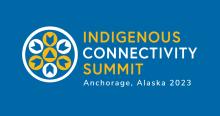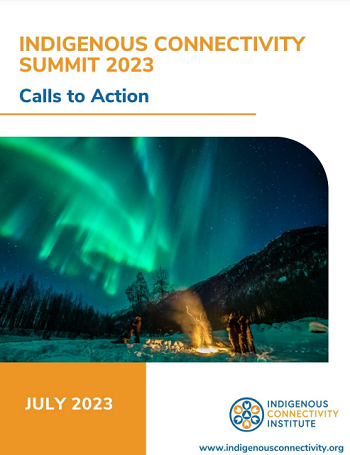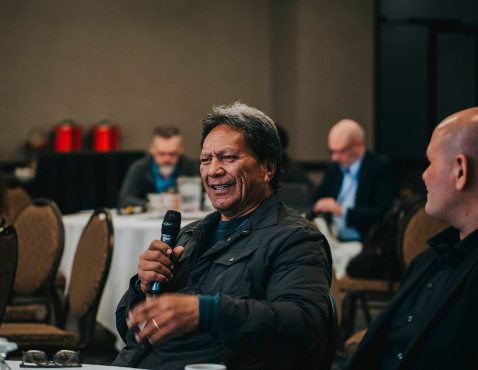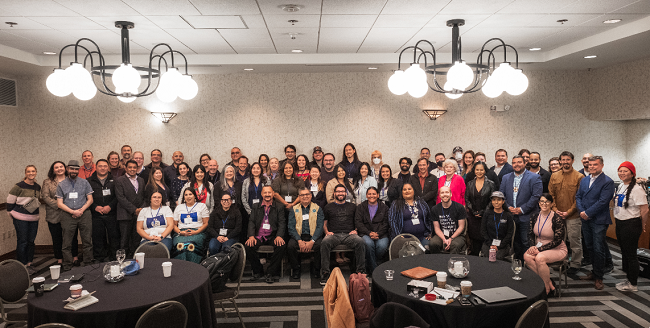
Fast, affordable Internet access for all.

Each year since its creation in 2017, the Indigenous Connectivity Summit (ICS) has convened those working on the frontlines of Tribal connectivity. It brings together decision makers and stakeholders to build support for digital sovereignty and quality, affordable connectivity for Indigenous communities.
With less than 60 percent of those living on Tribal lands in the lower 48 states having access to basic broadband connections – as Native Nations have regularly been excluded from policy conversations around these issues – ICS has become an important voice as the federal government is finally investing billions of dollars to expand high-speed Internet access across Indian Country.
The Summit, held this year in Anchorage, Alaska, was hosted by the Indigenous Connectivity Institute, an affiliate of Connect Humanity, an organization that supports underserved communities’ pursuit of better Internet access and enhancing digital skills. The Summit has become the most prominent event of its type in North America.

Summit participants don’t just convene and talk. They also agree on a series of calls-to-action for governments and other entities with an eye on promoting digital equity in Indigenous communities. Last year’s calls to action, which included messaging around inclusive Tribal consultation, government and industry accountability, Indigenous spectrum rights, and workforce development, served as the foundation for this year’s focus.
The calls to action note that though “colonial governments of Canada and the United States have little authority over Indigenous Peoples and lands,” collaboration between Indigenous communities and non-Indigenous governments and other non-Indigenous entities is the only way to scale out the broadband and digital equity work needed to ensure that Indigenous communities everywhere can get connected, especially given existing systems for funding these connectivity efforts.
We’ve highlighted a few points from this year’s calls-to-action below:
Rebuilding telecommunications policy and funding frameworks: Rather than relying on vaguely-defined consultation processes which often give non-Indigenous governments a backdoor out of genuine collaboration with Tribes, governments should use “shared decision-making and co-management” to generate any policy that will affect Indigenous people or lands. The establishment of an Indigenous office of telecommunications policy is also recommended. This office could help inform and facilitate relationship-building between Indigenous and non-Indigenous governments.
BEAD funding: “Direct Tribal input” should be required for state BEAD plans, not just to check a box at the end of the planning process, but from the very beginning to ensure that Tribal input is genuinely integrated into the plan. NTIA should offer some way besides a letter of credit requirement for providers receiving federal funding to demonstrate financial responsibility for their projects. The requirement has the potential to bar many smaller providers including Tribal ISPs from receiving funding.
As Connect Humanity recently noted, “many of the small ISPs, minority and women-owned businesses, nonprofits, and municipalities that the program claims to be targeting have little hope of meeting these requirements,” which is why ILSR is a part of a newly formed coalition calling on the Department of Commerce and the NTIA to create alternatives to the Letter of Credit requirement.

Affordability: Delegates recommend better data collection to document broadband affordability (or lack thereof); subsidy programs that ensure connectivity is affordable after BEAD and Affordable Connectivity Program (ACP) funds are depleted; more open access networks; more community-owned networks to boost competition and lower prices; and the establishment of a federal fund to help support operational costs for Tribal ISPs, many of which do not serve enough subscribers to be financially sustainable over the long term.
Access to spectrum: Federal governments should allocate spectrum for exclusive use by Indigenous communities only (especially on Indigenous lands), and provide operational support for Tribes to capitalize on this spectrum.
Capacity building and workforce development: Indigenous and non-Indigenous governments should collaborate to build digital skills and broadband literacy in Indigenous communities.
Find recordings of this year’s ICS presentations here, and reflections from young Indigenous attendees championing this work in communities across the continent here.
The full 2023 Call-to-Action document can be found here.

Inline images courtesy of Connect Humanity
